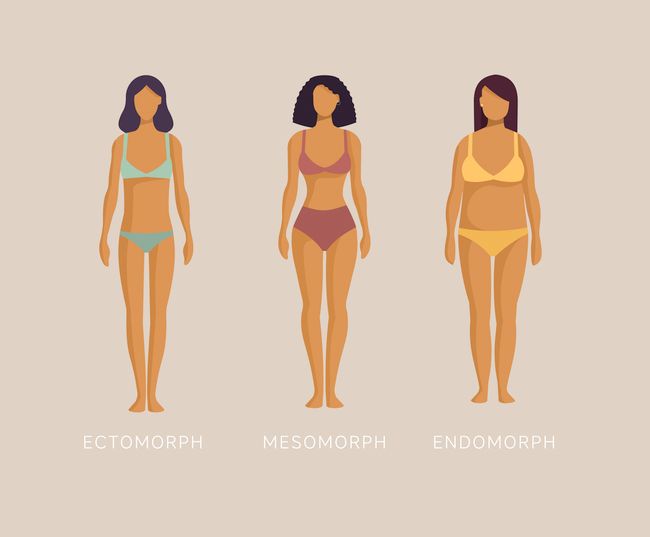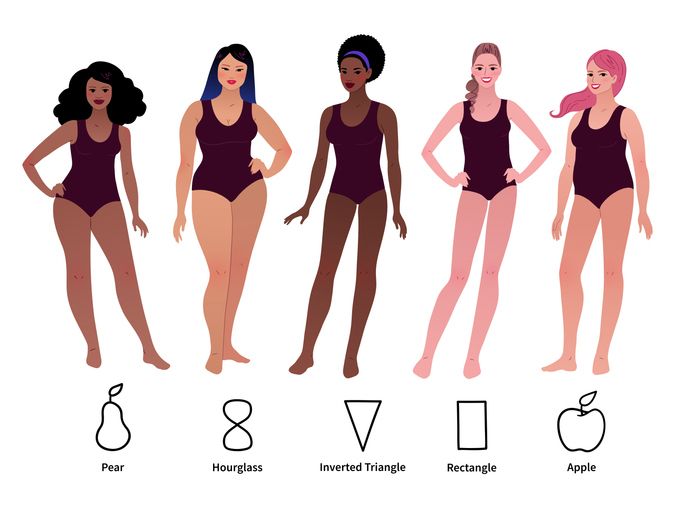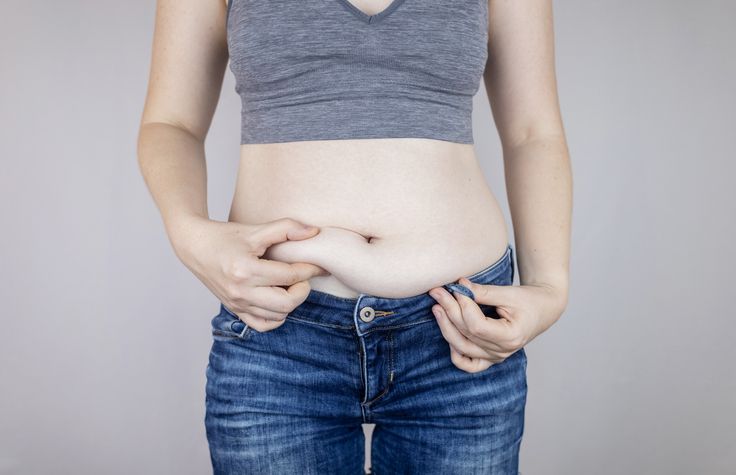
Author: Natalie Ng|Updated: 1 May 2025
Your body type plays a big role in how your body stores fat. It affects everything from where you gain weight to how your body responds to diet, exercise, and weight loss efforts. Whether you have a pear shaped body, an hourglass shape, or broader shoulders with a narrow waist, fat distribution is shaped by factors like genetics, hormone levels, muscle mass, and overall body composition. These differences go beyond appearance. They can impact your health risks, body weight, and how easily you gain muscle or lose body fat. For example, some people store more fat in the lower body, like the hips or thighs, while others carry more around the belly or upper body. That’s why two people with the same body mass index or waist circumference might look completely different—and why one-size-fits-all weight loss advice rarely works. You can’t change your bone structure or basic shape, but understanding your natural patterns—like your waist hip ratio, bust measurements, or where you tend to hold more fat—can help you make smarter choices. Whether you're trying to lose weight, gain muscle, or just stay healthy, knowing how your body works gives you a clear advantage. Keep reading to see how your body type affects fat distribution in five key ways—and what can be done to treat each one effectively.

Understanding Your Body Type: Body Shape Categories

Ectomorph
Ectomorphs usually have a slim build, narrow shoulders, and longer limbs. They often find it hard to gain weight or muscle, even with a high-calorie diet due to their high metabolism. Their muscle mass tends to stay low, and they may have a higher metabolism. Some ectomorphs still store fat in the lower abdomen or upper body, especially with a sedentary lifestyle.
Mesomorph
Mesomorphs often have a naturally athletic frame, with broader shoulders and a more balanced ratio between the hips and waist. They usually gain muscle and lose body fat more easily than other types. Their fat distribution is more even across the body, but they can still gain weight if they don’t maintain muscle through regular resistance training and proper nutrition, with protein intake adjusted based on their body weight.
Endomorph
Endomorphs tend to have a softer, rounder shape. They usually carry more weight and more fat in the lower body, especially around the hips, thighs, and buttocks. Endomorphs often have a pear shaped body or wider hips, and they may struggle to lose body fat. Their body stores fat more easily and loses it more slowly, even with diet and exercise.
Most People Are a Mix
You’re not locked into one type. Many people have traits from more than one category of body shapes—for example, someone might have narrow shoulders like an ectomorph but store more fat like an endomorph. Your body composition depends on a mix of genetic factors, hormones, and lifestyle choices. This is why two people with the same weight or body mass index can have different shapes, like an hourglass body shape or inverted triangle.
Knowing your body type helps you understand how fat distribution works in your case. Whether you’re trying to build more muscle mass, reduce your waist circumference, or manage body fat, your body type gives you a clearer starting point.

Hormonal Influences

Your hormones directly influence how your body stores fat. While your body type sets the foundation, your endocrine system decides how fat is distributed as hormones shift throughout your life. These changes affect areas like the hips, waist, and upper body—and can impact both appearance and health risks.
Estrogen
Estrogen affects fat storage in the lower body. It leads to more fat around the hips, thighs, and breasts. This is why many people with higher estrogen levels have a pear shape, wider hips, or a lower body that carries more fat. Estrogen also helps regulate fat storage during reproductive years, especially in the female body.
Testosterone
Testosterone is linked to fat stored in the upper body and around the abdomen. Higher levels of testosterone support muscle growth and maintenance, which helps with a lower body fat percentage. When testosterone levels drop, fat can start to build up in the belly or chest area, especially in people with broader shoulders or an inverted triangle body shape.
Cortisol
Cortisol is a stress hormone that encourages fat storage in the midsection. Chronic stress or poor sleep can cause cortisol to stay high, leading to more fat around the waist, lower abdomen, and belly button. This can change your waist measurements and raise your waist hip ratio—both of which are linked to higher health risks.
What You Can Do
Hormones don’t work in isolation—they respond to your habits. Regular resistance training, proper sleep, and a diet that keeps blood sugar stable can help manage these hormones. While you can’t fully control how your body responds, understanding these hormone-fat links gives you the chance to reduce excess weight in specific areas and improve overall body composition.
Book Now to Experience
S6 Body Sculpting Treatment
1 Minute Self-Registration
Date should not be before minimal date

Natural Fat Distribution Patterns

Your body stores fat in certain areas based on your bone structure, muscle tissue, and genetics. These patterns shape your overall body type and influence your hip or bust measurements, waist circumference, and how your clothes fit.
Apple Shaped
People with an apple shape tend to store more fat around the midsection. Fat builds up in the belly, sides, and lower abdomen. This shape is linked to higher health risks, including cardiovascular disease, especially if waist measurements are high compared to hip measurements.
Pear Shaped
A pear shaped body stores fat mostly in the lower body—around the hips, thighs, and buttocks. This shape often includes wider hips, narrow hips, and a narrow waist. While it’s generally linked to lower health risks than central fat storage, excess weight in the lower body can still affect mobility and joint health.
Hourglass Shape
The hourglass shape distributes fat more evenly between the upper and lower body. People with this body type usually have a defined waist, larger bust and hip measurements, and shoulders and hips that are the same width. This shape can still store fat in areas like the thighs or upper swell, depending on diet and exercise habits.
Rectangle Shape
Rectangle body types have a fairly uniform shape, with similar bust, waist, and hip measurements. Fat tends to spread evenly across the body, rather than concentrating in one place. People with this shape may find it harder to build curves, but they can influence body composition through muscle growth and resistance training.
Clothing science studies the impact of fat distribution on clothing fit, referencing a study in the International Journal of Clothing Science and Technology that categorizes female body shapes and their influence on clothing choices and sizing standards across various cultures.
Shape Isn’t Fixed
Fat distribution isn’t permanent. Your body can change based on factors like age, muscle mass, and activity level. With targeted diet and exercise, you can build muscle in specific areas or lose body fat to shift your shape slightly—whether that means creating a more defined waist, reducing belly fat, or adding more muscle mass in the lower body.

Health Risk Factors by Fat Location

Where your body stores fat can affect more than your shape—it can also impact your long-term health. Some areas of fat storage carry higher health risks than others, especially when the fat is located deep inside the body or around vital organs.
Belly Fat (Visceral Fat)
Fat stored in the belly—especially deep around the organs—is known as visceral fat. This type of fat is linked to serious health risks like cardiovascular disease, high blood pressure, and type 2 diabetes, according to the World Health Organization. A larger waist circumference or a high waist hip ratio often points to more visceral fat.
Solutions:Use high-intensity interval training (HIIT), reduce added sugars, and manage stress. These approaches lower cortisol and support fat loss in the midsection.
Thighs and Hips
Fat stored in the thighs and hips is usually subcutaneous fat, which sits just under the skin. While this fat may be harder to lose, it’s less associated with major health risks. Pear shaped bodies often carry more fat in these areas, including a wider hip measurement and narrow waist. The National Institute of Diabetes, Digestive and Kidney Diseases has found that fat stored in the thighs and hips may have different health implications compared to fat stored in other areas.
Solutions:Strength train the lower body to build muscle and boost metabolism. Follow a balanced diet with enough protein to support fat loss and muscle maintenance.
Upper Body
Fat in the upper body—especially around the chest and neck—can cause issues like sleep apnea and restricted breathing. People with an inverted triangle body type or broader shoulders might notice fat building up in these areas if their activity levels drop or they gain weight quickly.
Solutions: Incorporate posture work and chest-focused exercises. Keep total body fat levels healthy through consistent diet and exercise habits.
All-Over Fat Gain
Some people gain weight evenly across their whole body. While this may not change their overall shape much, it can increase pressure on the joints and lead to inflammation if more fat builds up over time.
Solutions: Stay active with full-body movement like walking, swimming, or circuit training. Prioritize anti-inflammatory foods such as vegetables, lean protein, and healthy fats to support body composition and reduce excess weight.
Book Now to Experience
S6 Body Sculpting Treatment
1 Minute Self-Registration
Date should not be before minimal date

Response to Diet and Exercise: Customized Strategies for Each Body Type

Working with your body type helps you create realistic, effective goals. Your bone structure, fat distribution, and muscle tissue affect how your body responds to diet and exercise. A focused approach helps you lose body fat, gain muscle, or maintain a healthy weight in a way that suits your natural shape.
Apple Shaped Body
Apple shaped bodies usually carry more fat in the midsection. This raises the risk for health conditions like cardiovascular disease, especially when waist measurements are high compared to hip measurements.
Solutions:Use high-intensity cardio to reduce belly fat and improve heart health. Manage stress to help lower cortisol levels. Include core-strengthening workouts to support the lower back and improve posture. A diet rich in fiber, protein, and healthy fats helps reduce overall body fat. Consider using a body type calculator to determine specific strategies for apple shaped bodies.
Pear Shaped Body
Pear shaped bodies often have wider hips, a narrow waist, and store fat in the thighs and lower body. Fat loss in these areas can be slower, and joint support is important.
Solutions:Focus on lower-body resistance training to build more muscle mass and increase metabolism. Use high-repetition exercises to improve endurance in the hips and legs. Add upper body training to support balance and posture. Keep your diet steady with nutrient-dense foods that support muscle maintenance. Use a measuring tape to track changes in hip and waist measurements.
Hourglass Body Shape
Hourglass figures usually have a well defined waist, larger bust and hips, and balanced fat distribution. They tend to gain weight evenly across the body.
Solutions: Use full-body strength training to maintain symmetry. Keep cardio in your routine to support fat loss without reducing muscle. Track waist, bust, and hip measurements to spot changes early and adjust your plan as needed. Stick with balanced nutrition to maintain healthy body composition.
Rectangle Body Shape
Rectangle body types have similar measurements in the waist, hips, and bust. They often have less fat in specific areas and a straighter overall shape.
Solutions: Use targeted resistance training to add shape. Build muscle in the glutes, shoulders, and core to define curves. Avoid crash dieting, as it can reduce muscle tissue. Stick with a consistent routine that supports muscle growth and overall fat loss.

Enhancing Fat Loss with New Beauty’s S6 Body Sculpting Treatment
While your body type influences how and where you store fat, you’re not limited to just diet and exercise to make changes. For people struggling with stubborn fat in specific areas—especially those that don’t respond well to workouts—S6 Body Sculpting Treatment offers a non-invasive way to improve your body composition and shape.
This treatment is especially helpful if you have a pear shaped body, apple shaped body, hourglass shape, or another body type where fat tends to settle in certain spots. Whether it's your belly, thighs, waist, or arms, S6 helps reduce local fat without surgery.
What Is S6 Body Sculpting?
S6 Body Sculpting Treatment uses low-energy bio-laser technology combined with vacuum suction. The laser targets subcutaneous fat layers and breaks down fat cells by triggering fatty acid release. The vacuum suction helps move those fatty acids through the lymphatic system for natural elimination. This process also stimulates collagen, which tightens the skin in the treated area.
How It Works
1. A therapist first performs a body shape and fat distribution analysis.
2. The bio-laser targets the selected fat storage area—such as the belly, thighs, or lower back—releasing fat from the cells.
3. Vacuum suction and massage support the removal of fatty acids and boost your metabolism.
4. Over multiple sessions (typically 10–12), you’ll see visible fat reduction, especially in areas resistant to fat loss.
Why It Works for Different Body Types
Because the S6 treatment is customizable, it works well for different body types:
• If you store more fat in the lower body (wider hips, thighs), the treatment can reduce fat without affecting your muscle mass.
• If you’re carrying more fat around your waist or upper body, it helps shrink the area and support a more defined waist.
• If your body stores fat evenly, the treatment can still target parts like the lower abdomen or back where fat is harder to lose.
The technology doesn’t require surgery or medication, and it suits many female body types and fitness levels. The fashion industry often influences body type perceptions, and S6 Body Sculpting can help meet those standards.
Key Advantages
• Targets stubborn areas: belly, arms, waist, thighs, calves, back, and lower buttocks
• Non-surgical and non-invasive: no downtime, no injections
• Supports fat loss and body contouring for all body types
• Helps maintain a healthy waist hip ratio
• Boosts metabolism and improves body composition
• Tightens skin and supports collagen production
Whether you're trying to lose weight, reshape your silhouette, or reduce excess weight in specific areas, S6 offers a solution that works alongside your natural body structure.
Ready to reshape your body in a way that works with your body type—not against it? Book your S6 Body Sculpting consultation today.
New Beauty's S6 Body Sculpting TreatmentBook Now to Experience
S6 Body Sculpting Treatment
1 Minute Self-Registration
Date should not be before minimal date
FAQ
Can Pregnancy Permanently Change Where My Body Stores Fat?
During pregnancy, hormones like estrogen and progesterone trigger your body to store fat differently, particularly around your hips and thighs. After giving birth, you'll likely notice new fat patterns as your body adapts to its post-pregnancy state, with some women experiencing lasting changes in their fat distribution.
Does Stress Affect Which Areas of My Body Accumulate Fat First?
Yes, stress directly affects where you store fat, primarily through the hormone cortisol. When you're stressed, your body tends to store more fat in your midsection, especially around your belly. This stress belly pattern happens because cortisol triggers your body to hold onto fat reserves in your abdomen. While you can't control all stress, managing it through meditation, exercise, or therapy can help rebalance your body's fat-storing patterns.
Why Do Some People Gain Weight Evenly While Others Don't?
Your genetics play the starring role in this story, determining how your body distributes fat through inherited hormonal patterns and body composition tendencies. You're also influenced by your hormones, particularly estrogen and testosterone, which create distinct fat storage patterns. Your age, lifestyle, and stress levels further shape where your body chooses to store excess calories.
Can Certain Medications Alter My Body's Natural Fat Distribution Patterns?
Yes, medications can substantially change how your body distributes fat. Steroids often cause facial and trunk fat accumulation, while antidepressants might lead to overall weight changes. Birth control pills can affect where you store fat, typically in hips and breasts. Insulin treatments commonly cause weight gain around your midsection. Understanding these effects empowers you to make informed decisions about your medication choices.
Does the Speed of Weight Gain Influence Where Fat Is Stored?
Your body's fat storage follows predetermined patterns regardless of how quickly you gain weight.While you can't control where fat settles first, rapid weight gain can stress your body's natural distribution system, potentially leading to more visceral fat around organs. Your genetics and hormones remain the key players in fat placement, whether you're gaining slowly or quickly.
Recommended Articles
COPYRIGHT© NEW BEAUTY MANAGEMENT LIMITED 2025. ALL RIGHT RESERVED.




